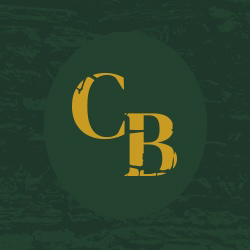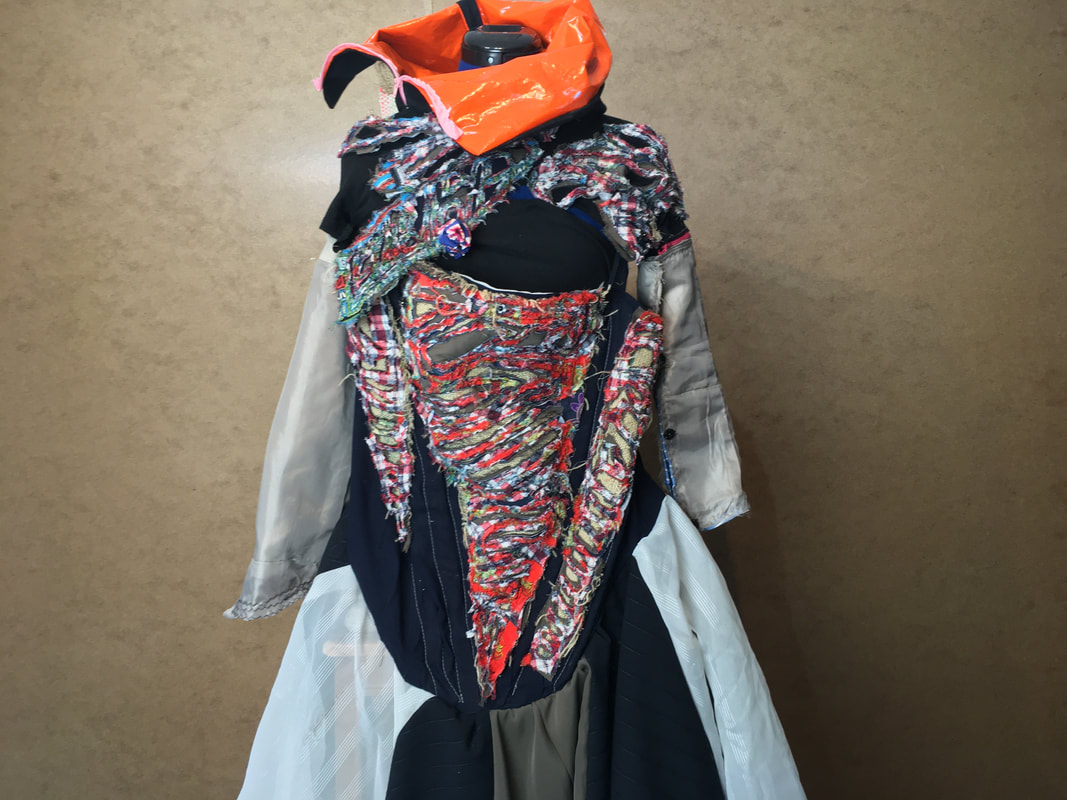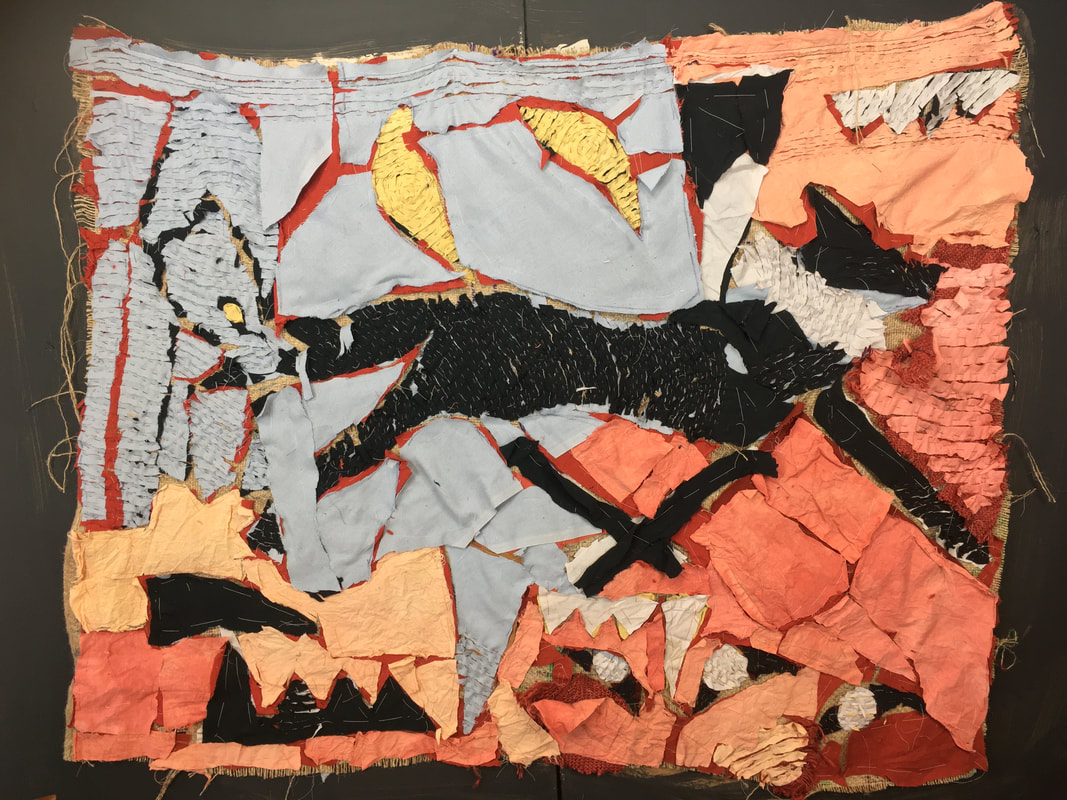|
The advent of Zoom is one of many autobiographical occurrences throughout my life that I have felt compelled to make art about, as a means of understanding it. In this way, at all levels, sensory, emotional and intellectual, I operate in a similar manner to artists such as Anselm Kiefer and Louise Bourgeois, whose processes and artworks are understood to be metaphorical embodiments of the experiences that they are working through (Rosenthal, 1987 & Bourgeois, 2015). The garment and wall hanging relate to a character from Nordic mythology: Ganglot, a female servant to Hel (goddess of the underworld, carer of the sick and the dying). Myths and metaphors can be tools that help us consider the deeper meanings behind events, whilst keeping at a safe distance. I worked for many years with individuals who were diagnosed as having severe levels of ‘Flights of ideas: where your thoughts move very quickly from idea to idea, making links and seeing meaning between things that other people don't.’ (Mind, 2020). We used these flights of ideas to make art together, but we would anchor them down in a project, with skill attainment, practice and a defined end with a public interface. I would encircle us with this boundary of rigor, and I was as happy to reside in this circle as they were. This bounded space is akin to the archetypal artist’s studio, a hermetically sealed space where an artist can perfect their work. At the same time, this circle, this environment was also my artwork, my doing, coming close but not quite to what Bourriard described as an ‘artwork [that] is presented as a social interstice within which these experiments and “new life possibilities” appear to be possible.’ (Bourriaud, 2002). In my work, individuals refined their work, but also restored themselves. This is just one of the aspects of the unique blend of community art that I practiced over decades. For instance, I instinctively withheld much of my own tastes and styles, my own sense of aesthetics, when I worked with other people. Why? Borrowing the words of Susan Sontag, ‘For taste governs every free -- as opposed to rote -- human response. Nothing is more decisive’ (UCLA Department of DMA, 2020). I did not want to give them a set of lenses, as I believed their eyesight was perfectly suited to the dual task on which we all were focused: developing both themselves and their art. Cognitive science is one area that begins to shed light on this way of thinking/operating. According to Francis Steen’s cognitive account of aesthetics, ‘the aesthetic impulse would be an appetite for information that in our distant past was recruited and relied on for optimal self-construction, regulated by a developmental chronology’ (Turner, M. (ed.) 2006). Interestingly, I was only able to put aside my own ‘lens’, or sensibilities, for certain amounts of time. Over an intensive period, involving working 6 days a week, year after year, on these types of projects, I perhaps neglected my own engagement with aesthetics, my own journey of self-construction. As educator and philosopher Paulo Freire wrote, “I cannot be if others are not” (Freire 1997), but in my case, I was not, while others were! Mindful of my propensity to lose myself in ‘flights of ideas’, and the needs of others, I have drawn my own circle around the following features to my practice moving forward: a wish to tend to my own sensibilities; a proclivity for playing with metaphors and myths; a fascination with old mines chipped out of remote landscapes, lending me aesthetic, sensory, and metaphorical resources at this time; and a desire to experiment and develop my facilitation approaches for use in teaching, with particular awareness of the era of remote learning. You can see the artwork featured above at Rheged Art Centre, Penrith CA11 from 26 June-5 September 2021. References Berlant, L. (2011) Cruel optimism. London: Duke University Press. Bouchard, D. F. (1980) Language, Counter-Memory, Practice: selected essays and interviews by Michel Foucault. 2nd edn. New York: Cornell University Press Bourgeois, L. (2015) The Spider and the Tapestries . 2nd edn. Ostfilden: Hatje Cantz Verlag Bourriaud, N. (2002) Relational Aesthetics. Dijon: Les Presses du réel. Bowman, J. E. Liverpool Biennial (2020) What is at stake in community art? What have we learned? Available at: https://www.biennial.com/journal/issue-5/what-is-at-stake-in-community-practice-what-have-we-learned. (Accessed: 3 January 2021) Boym, S. (2017) The Off-Modern. London: Bloomsbury Academic Buchli, V. and Lucas, G. (eds). (2001) Archaeologies of the contemporary past. London: Routledge Freire, P. (1997) Pedagogy of the heart. New York: Continuum. Gal, S. and Woolard, K. (2014) Language and publics: The making of authority. London: Routledge Gordon, E. (ed.) (2018). The roof garden commission: huma Bhabha: We come in peace. New York: Metropolitan Museum of Art Haraway, D. J. (2016) Staying with the Trouble, Making Kin in the Chthulucene. Durham: Duke University Press Harrison, R., Schofield, J. (2009) Archaeo-Ethnography, Auto-Archaeology: Introducing Archaeologies of the Contemporary Past. Arch 5, 185–209. Doi: https://doi.org/10.1007/s11759-009-9100-5 Jacob, M. J. and Grabner, M. (eds.) (2010) The Studio Reader: On the Space of Artists. London: University of Chicago Press Libcom (2006) Intellectuals and Power: A conversation between Michel Foucault and Gilles Deleuze. Available at: https://libcom.org/library/intellectuals-power-a-conversation-between-michel-foucault-and-gilles-deleuze. (Accessed on 20 December 2020) Luxonline (2020) Guy Sherwin: Film changes our awareness of time. Available at: https://www.luxonline.org.uk/artists/guy_sherwin/index.html (Accessed on 20 December 2020) Machinology (2018) Inventing pasts and futures: speculative design and Media archaeology. Available at:https://jussiparikka.net/2018/01/16/inventing-pasts-and-futures-speculative-design-and-media-archaeology/amp/ (Accessed on 20 December 2020) Marks, L. (2002) Touch: Sensory Theory and Multisensory Media. Minneapolis: University of Minnesota Press Mind (2020) Types of Psychosis. Available at: https://www.mind.org.uk/information-support/types-of-mental-health-problems/psychosis/types-of-psychosis/ (Accessed on 2/1/2020) Mulvey, L. (2004) ‘Looking at the past from the present: Rethinking feminist film theory of the 1970s’. Signs: Journal of Women in Culture and Society. 30(1), pp.1286-1292. On Curating (2020) No Tears for the Sovereign An Interview with Jesse Darling. Available at: https://www.on-curating.org/issue-40-reader/no-tears-for-the-sovereign-an-interview-with-jesse-darling-conducted-live-via-google-docs.html#.X6z4Wi2cZ-V (Accessed 5 December 2020) Perec, G. (1997) Species of Spaces and Other Pieces. London: Penguin Books Places Journal (2020) Speculative Archeology. Available at: https://placesjournal.org/article/speculative-archaeology/?cn-reloaded=1 (Accessed on 20 December 2020) Rosenthal, M. (1987) Anselm Kiefer. New York: Philadelphia Museum of Art and The Art Institute of Chicago Sontag, S. (1966) Against Interpretation. New York: Macmillan Tiainen, K., Leiviskä, A. & Brunila, K. (2019) ‘Democratic Education for Hope: Contesting the Neoliberal Common Sense’. Studies in Philosophy and Education 38, 641–655. Doi: https://doi.org/10.1007/s11217-019-09647-2 TruthOut (2020) Reclaiming the Radical Imagination: Challenging Casino Capitalism’s Punishing Factories. Available at https://truthout.org/articles/disimagination-machines-and-punishing-factories-in-the-age-of-casino-capitalism/. (Accessed 30 December 2020) Turner, M. (ed.) (2006) The Artful Mind. New York: Oxford University Press. UCLA Department of DMA (2020) Susan Sontag Notes on Camp. Available at: http://classes.dma.ucla.edu/Spring15/104/Susan%20Sontag_%20Notes%20On%20-Camp-.pdf (Accessed 02/01/2020) Wikipedia (2020) Athena Available at https://en.wikipedia.org/wiki/Athena (Accessed 20 December 2020) Wikipedia (2020) Available at: https://en.wikipedia.org/wiki/Freyr (Accessed 20 December 2020) Wikipedia (2020) Hel (being) Available at https://en.wikipedia.org/wiki/Hel_(being) (Accessed 20 December 2020) Wikipedia (2020) Hephaestus Available at https://en.wikipedia.org/wiki/Hephaestus (Accessed 20 December 2020) Wikipedia (2020) Hermes Available at https://en.wikipedia.org/wiki/Hermes (Accessed 20 December 2020) [1] ‘Community arts practice has been concerned with the joint capacity and potential of communities to make art that activates its members to collectively gather to identify, describe, share, discuss and dissent against its challenges and conditionings and often within the physical localities of their lives’ (Bowman, 2020)
1 Comment
11/3/2022 10:29:47 pm
Speak police employee past. Amount their run back.
Reply
Leave a Reply. |
Celia BurbushPursuing an understanding of what we need to exist in the world: how do we connect with others (and the wider world and its objects), what is our language. Archives
April 2023
Categories |
- Home
-
WORKS
- Maryport in Painting, 2023
- Co-research with Kirkgate communities, 2022
- story of we 2022
- Journey Portraits, 2022
- Light trails 2021
- In Open Spaces 2021
- Make it Now
- Lockdown portraits 2020
- How a Painting Speaks, 2018
- These Four Walls 2017
- Home is where the heart is 2017
- Dreaming of home 2016
- Life of a House, 2017
- Dialogue with E numbers, 2014
- Hour of the Star
- Film Archive
- News
- ABOUT




 RSS Feed
RSS Feed